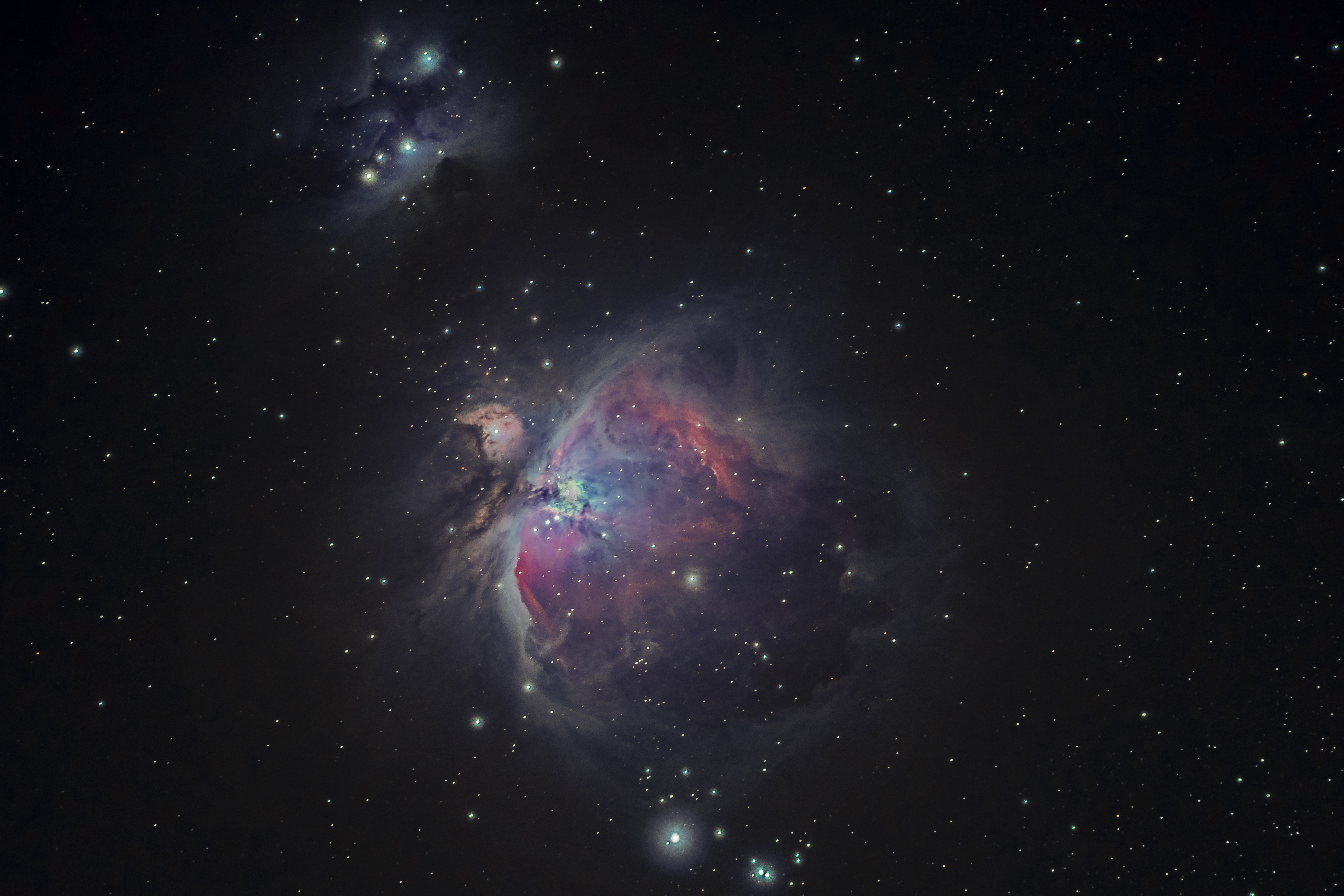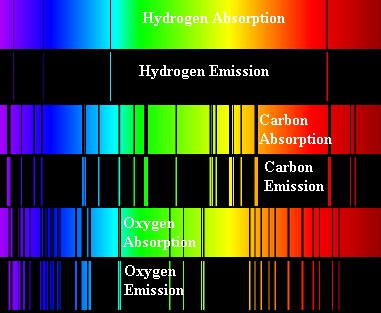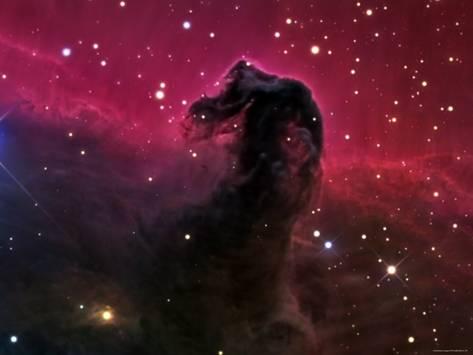
What’s a nebula?
Well…you’re looking at one.
Okay, okay, I know. You want to know what that actually is. You want to know why it’s there. You want to know why there are colors in space…and why you’ve never noticed such a thing in your own night sky before.
Nebulae are the stuff between the stars. They’re the galaxy’s backstage. They’re the only visible evidence of a vast expanse of gas and dust between the stars, completely invisible to the human eye, called the interstellar medium.
Nebulae are the sites of star birth. Planets form from the dusty particles present in these glowing space clouds. They’re the galaxy’s way of replenishing itself. And they’re pretty cool to look at, too.
But how come they look the way they do?
I’m going to introduce you to a sight you may have seen before. It’s famous enough—it ranks right up there with the “Pale Blue Dot” and the “Hubble Deep Field.”

Meet the “Pillars of Creation.”
They earn their name. True, it’s a bit on the dramatic side, but what else could be befitting of such an incredible stellar object? The Pillars of Creation are quite literally a place of creation—star creation. And, most likely, planet creation.
But they’re hardly the whole of the picture.

They’re part of the Eagle Nebula, a vast nebula that’s home to hundreds of newborn stars. You can see them there in the middle, floating amid the hazy pink gas.
So…why exactly is this nebula pink?
I know. Maybe it’s not a question you’d think to ask. It’s like, “Why is space black?” or “Why is the sky blue?”
Except it’s not. Actually, I’m going to come back to why the sky is blue in just a bit. For now, let’s take a look at why the Eagle Nebula—and the Lagoon Nebula and countless others—is pink.
It all comes down to a quirk of the electromagnetic spectrum, the spectrum of all radiation in the universe (including visible light).

What the heck are we looking at here?
When you aim a special device called a spectrograph at anything in the universe, you’ll get something like this. It’s a rainbow…except only specific colors along the band from purple to red are coming through.
Aim a spectrograph at a star, and you’ll get almost what we call a continuous spectrum—basically, a complete rainbow with just a couple dark lines (like the bright ones, above) where specific colors went missing.
A not-quite-continuous spectrum like that is called an absorption spectrum. A star emits radiation of every color of the rainbow and then some, but materials in its atmosphere absorb specific wavelengths of radiation…and the dark lines appear.
But the spectrum you see above is an emission spectrum. It’s produced when an excited gas—basically, a gas that’s really, really hot—emits radiation, but only at specific wavelengths.
You can think of an emission spectrum as the opposite of an absorption spectrum. Instead of specific wavelengths getting blocked and the rest shining through, only those specific wavelengths are getting emitted in the first place.

So, what does this have to do with nebulae?
Well, nebulae—some of them, that is—are essentially excited gases.
It takes specific circumstances for it to work. We have to ionize the nebula’s hydrogen gas, which basically means we have to strip the hydrogen atoms of their protons. And in order to do that, we need some very hot stars nearby.
Hotter than, oh, let’s say 25,000 Kelvin. That’s about, oh, 44,540℉.
Stars that hot are rare. Only B1-type and hotter are sufficient. They’re the very bright blue stars you see scattered about the Eagle Nebula up above.
Anyway, now I’ll bet you’re wondering how these emission spectra make nebulae look pink. Well…that’s because the only colors the nebulae produce are red, blue, and violet, sort of blending together into that bright pink color.
Because these pink nebula are produced by an emission spectrum, they’re called emission nebulae.
But O and B type stars are rare. We won’t always get the conditions for ionization and a pink emission spectrum. Often, we get something more like this…

This is the Iris Nebula, a reflection nebula. And…remember how I mentioned that I was going to come back to why the sky is blue? Well, now’s the time.
This may surprise you, but a reflection nebula isn’t all that different from our own Earth…and our atmosphere.
Nebulae have all the ingredients for planet formation. In fact, that’s practically their job. And that means they have what it takes to give their planets rocks and dust and water and oxygen, and most importantly, an atmosphere.
Those atmosphere ingredients are the reason reflection nebulae appear blue, and it’s for the same reason the sky is blue. And like with emission nebulae, it all comes down to a quirk of light.
All radiation is defined by its wavelength, which is exactly what it sounds like—the length of a wave. Radiation literally travels in a shape similar to the crests and troughs of ocean waves.
For a full review of the electromagnetic spectrum, I recommend you check out my posts on the subject. But for now, know that it’s essentially a spectrum of different wavelengths of radiation.

Our eyes can only perceive a small part of this spectrum, and we perceive shorter visible wavelengths as blue and longer ones as red. Due to the unique physics of light, shorter wavelengths scatter about more easily. Shoot them at a planetary atmosphere, and it’s like packing a crowd of kids in a bouncy house.
It’s chaos.
The light photons from the sun bounce around every which way. The longer wavelengths—the red ones—will bounce a bit less and penetrate the atmosphere more directly. They’ll reach observers closer to Earth’s terminator, the boundary between daylight and night.
Observers there will see a brilliant red sunrise or sunset.
But anyone standing on the daylight side will get their visual receptors bombarded by stray blue photons from all sides. They’ll perceive the sky as blue.
The blue color of the Iris Nebula is not a result of the actual color of the dust there. I think it’d be pretty weird if dust grains were blue. Light from the stars nearby is bouncing off those particles, and the blue photons reach our eyes.
That’s why blue nebulae are called reflection nebulae—they’re the result of light reflecting off dust particles.
Emission and reflection nebulae are pretty cool to look at. But every once in a while, you’ll stumble upon one of these…and you’ll notice immediately that there’s something different about them.

This is a dark nebula.
Don’t let that ominous name fool you. It’s not the Death Star. It’s called a dark nebula because it’s quite literally dark. This particular one is the relatively famous Horsehead Nebula.
Dark nebulae are unlikely any different from emission or absorption nebulae. They’re all really the same thing, just viewed in different ways.
An emission nebula is a cloud of dust and gas that’s excited enough to emit its own radiation. An reflection nebula is the same cloud, but not hot enough to emit light. It has to be illuminated by nearby stars.
And a dark nebula is just a reflection nebula that doesn’t have any nearby stars to illuminate it, or is too thick for starlight from within to shine through.
Just for the fun of it, here’s a nebula with just a little bit of everything: the Trifid Nebula.

To the left, you can see the bright pink hues typical of an emission nebula. To the right, bright young stars scatter their blue light among the dust particles. And threaded throughout the emission nebula are the dusty strands of a dark nebula.
There’s a lot more to explore when it comes to nebulas, but I think I’ll save the rest for posts coming up.
I liked this, learned a bit that I didn’t know. I guess it stands to reason that light reflects and refracts in different ways causing all these colours. Nice post as alway s Emma 🙂
LikeLiked by 1 person
Thank you! Glad you learned something 😊
LikeLike
I did thanks 🙂
LikeLiked by 1 person